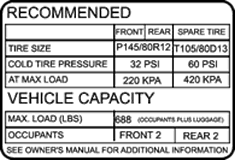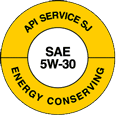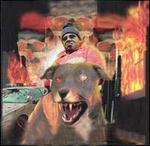O.k. I took the time to bring you this bit of info to the

. We all know how pricey gas is getting now-a-days and from the looks of it, it isn't going to get any cheaper either.

Prices are ranging from over $1.50 to over way over $2.00 per gallon in some states. So here are some tips to get better gas mileage out of your car.
(DAVE or moderators: I think we should "sticky" this).

 Your driving styles can be more efficient
1.Drive Sensibly
Your driving styles can be more efficient
1.Drive Sensibly
Aggressive driving (speeding, rapid acceleration and braking) wastes gas. It can lower your gas mileage by 33 percent at highway speeds and by 5 percent around town. Sensible driving is also safer for you and others, so you may save more than gas money. So no "jack rabbit" starts!
Fuel Economy Benefit: 5-33% Equivalent Gasoline Savings: $0.07-$0.49/gallon
2.Observe the Speed Limit
Gas mileage decreases rapidly at speeds above 60 mph. Each 5 mph you drive over 60 mph is like paying an additional $0.10 per gallon for gas. Observing the speed limit is also safer.
Fuel Economy Benefit 7-23% Equivalent Gasoline Savings: $0.10-$0.34/gallon
 3. Avoid Excessive Idling
3. Avoid Excessive Idling
Idling gets 0 miles per gallon. Cars with larger engines typically waste more gas at idle than do cars with smaller engines
4.Use Cruise Control
Using cruise control on the highway helps you maintain a constant speed and, in most cases, will save gas
5.Use Overdrive Gears
When you use overdrive gearing, your car's engine speed goes down. This saves gas and reduces engine wear
Keep the car running good.
1.Keep Your Engine Properly Tuned
Fixing a car that is noticeably out of tune or has failed an emissions test can improve its gas mileage by an average of 4.1 percent, though results vary based on the kind of repair and how well it is done. If your car has a faulty oxygen sensor, your gas mileage may improve as much as 40 percent.
Fuel Economy Benefit:4-40% Equivalent Gasoline Savings: $0.06-$0.60/gallon
2.Check & Replace Air Filters Regularly
Replacing a clogged air filter can improve your car's gas mileage by as much as 10 percent. Your car's air filter keeps impurities from damaging the inside of your engine. Not only will replacing a dirty air filter save gas, it will protect your engine
Fuel Economy Benefit: up to 10% Equivalent Gasoline Savings: up to $0.15/gallon
3.Keep Tires Properly Inflated
You can improve your gas mileage by around 3.3 percent by keeping your tires inflated to the proper pressure. Under-inflated tires can lower gas mileage by 0.4 percent for every 1 psi drop in pressure of all four tires. Properly inflated tires are safer and last longer.
Fuel Economy Benefit: up to 3% Equivalent Gasoline Savings: up to $0.05/gallon
 4.Use the Recommended Grade of Motor Oil
4.Use the Recommended Grade of Motor Oil
You can improve your gas mileage by 1-2 percent by using the manufacturer's recommended grade of motor oil. For example, using 10W-30 motor oil in an engine designed to use 5W-30 can lower your gas mileage by 1-2 percent. Using 5W-30 in an engine designed for 5W-20 can lower your gas mileage by 1-1.5 percent. Also, look for motor oil that says "Energy Conserving" on the API performance symbol to be sure it contains friction-reducing additives
Fuel Economy Benefit: 1-2% Equivalent Gasoline Savings: $0.01-$0.03/gallon
 Efficient Traveling
Planning and combining tips
Efficient Traveling
Planning and combining tips
Combining errands into one trip saves you time and money. Several short trips taken from a cold start can use twice as much fuel as a longer multipurpose trip covering the same distance when the engine is warm. Trip planning ensures that traveling is done when the engine is warmed-up and efficient.
With a little planning, you can avoid retracing your route and reduce the distance you travel as well. You'll not only save fuel, but also reduce wear and tear on your car
Commuting
If you can stagger your work hours to avoid peak rush hours, you'll spend less time sitting in traffic and consume less fuel.
If you own more than one vehicle, drive the one that gets the best gas mileage whenever possible.
Consider telecommuting (working from home) if your employer permits it.
If possible, take advantage of carpools and ride-share programs. You can cut your weekly fuel costs in half and save wear on your car if you take turns driving with other commuters. Many urban areas allow vehicles with multiple passengers to use special High Occupancy Vehicle (HOV) lanes.
Traveling
A roof rack or carrier provides additional cargo space and may allow you to meet your needs with a smaller car. However, a loaded roof rack can decrease your fuel economy by 5 percent. Reduce aerodynamic drag and improve your fuel economy by placing items inside the trunk whenever possible. Avoid carrying unneeded items, especially heavy ones. An extra 100 lbs in the trunk reduces a typical car's fuel economy by 1-2 percent. Keep it as aerodynamic as possible.
Good luck to all!

<br>
>>>For Sale? Clicky!<<<
-----The orginal Mr.Goodwrench on the JBO since 11/99-----























